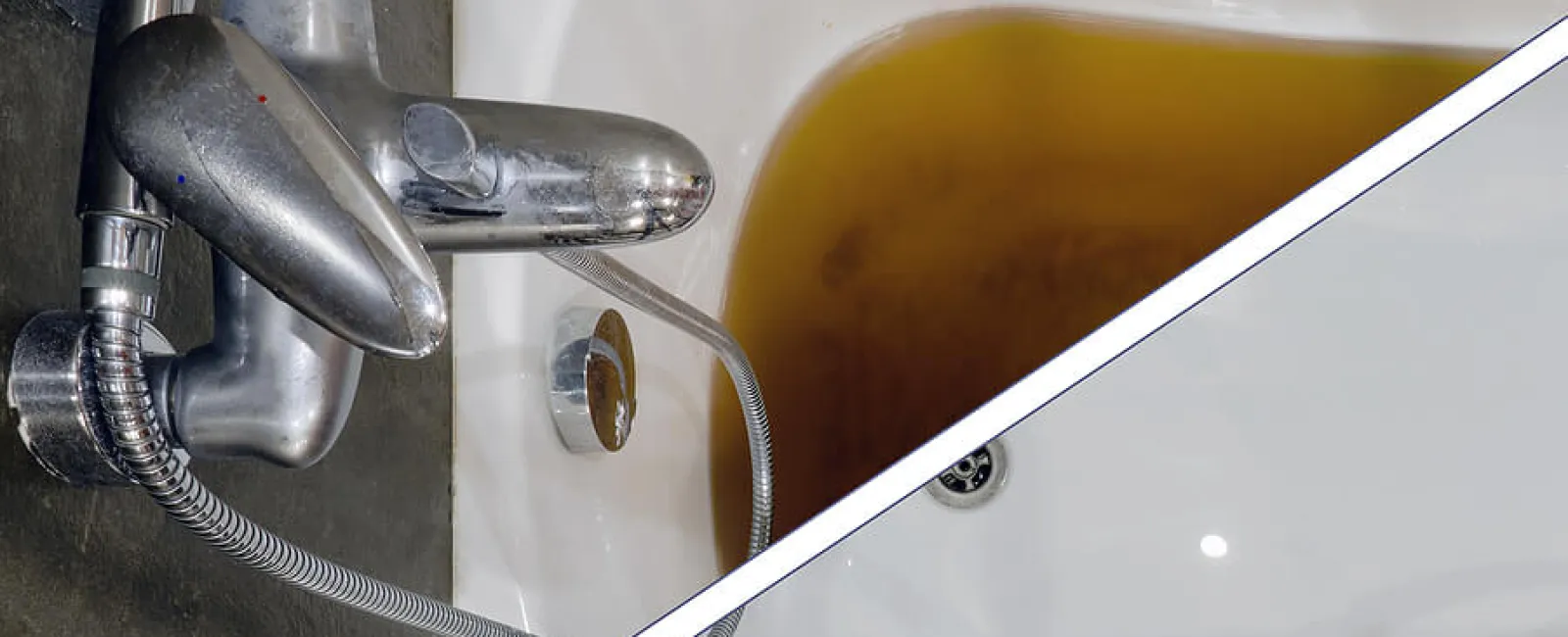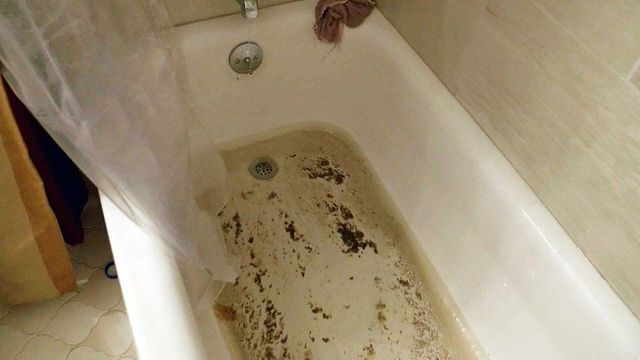Our Guide to Effluent Emergence in the Bathtub
Our Guide to Effluent Emergence in the Bathtub
Blog Article
Here underneath you can find more excellent resources on the subject of Why sewage is coming up through your bathtub.

Sewer backup in the bathtub can be a distressing and unhygienic trouble for any home owner. Not only is it inconvenient, but it additionally postures significant wellness threats and suggests underlying concerns with the plumbing system. Recognizing why sewer is turning up via the tub is vital for taking proper activity to resolve the problem successfully.
Introduction to the Problem
Typical Reasons for Sewer Back-up
Obstructions in the Sewage System Line
One of the most usual sources of sewage backup is a blockage in the sewage system line. This can happen as a result of the accumulation of debris, grease, or international items in the pipes, avoiding appropriate flow and triggering sewer to support right into your bathtub.
Tree Origin Invasion
Tree origins looking for dampness and nutrients can penetrate sewer lines with little fractures or joints. In time, these origins can expand and broaden, triggering substantial damage to the pipes and bring about sewage back-up issues.
Understanding the Issue
When sewage starts backing up into the bath tub, it's a clear indication of a problem with the drainage system. The wastewater that needs to be flowing away from your home is instead discovering its way back into your living space, which can result in considerable damage and carcinogen.
Potential Causes
Numerous aspects can contribute to sewer backup in the tub. From clogs in the sewage system line to concerns with the plumbing facilities, recognizing the source is necessary for locating an option.
Aging Infrastructure
Older homes might have outdated plumbing systems that are much more vulnerable to rust, splits, and damage. As pipelines age, they become extra prone to leakages and clogs, boosting the chance of sewer back-up events.
Heavy Rainfall or Flooding
During periods of heavy rainfall or flooding, the sewer system might end up being overwhelmed with excess water, creating back-ups and overflows. This can lead to sewage backing up right into bathtubs and various other fixtures inside the home.
Indications of Sewage Backup
Foul Odors
Undesirable smells rising from drains or components, particularly in the bathroom, might indicate sewer backup problems. These odors are often solid and consistent, indicating a problem that calls for prompt focus.
Slow Draining Fixtures
Bathtubs, sinks, and commodes that drain pipes gradually or otherwise whatsoever could be experiencing sewer backup. If numerous components are impacted simultaneously, it's likely that the concern originates from a typical factor, such as the primary sewer line.
Gurgling Noises
Weird gurgling or bubbling sounds originating from drains pipes when water is running in other places in your home are a sign of air trapped in the plumbing system. This air buildup can arise from sewage back-up and need to be examined without delay.
Wellness Dangers Connected With Sewage Back-up
Contamination of Water
Sewer backup can infect the water system in your house, positioning a serious health threat to you and your family. Direct exposure to polluted water can result in stomach issues, skin infections, and various other health problems.
Mold Growth
Wetness from sewage back-up can develop perfect conditions for mold growth in your home. Mold and mildew spores can aggravate respiratory issues and trigger allergies in delicate people, making timely cleaning crucial.
Spread of Condition
Sewer consists of dangerous germs, viruses, and parasites that can cause a series of conditions, including hepatitis, cholera, and gastroenteritis. Entering contact with sewage or infected surface areas places you in jeopardy of infection.
Tidying up After Sewage Back-up
Sanitation Procedures
Thoroughly disinfect and sanitize impacted areas after sewer backup to eliminate dangerous bacteria and prevent mold development. Usage proper cleaning items and protective gear to ensure secure and reliable cleanup.
Reconstruction of Impacted Areas
Fix any damage to floor covering, walls, or components triggered by sewer back-up. Relying on the extent of the damages, you may need to replace carpeting, drywall, or other materials to recover your home to its pre-loss problem.
Immediate Actions to Take
Turning Off Water Supply
In the event of sewer back-up, it's necessary to shut off the water system to prevent further contamination and damages. Find the primary water shutoff valve in your house and closed it off till the concern can be settled.
Contacting a Professional Plumber
Taking care of sewage backup is not a DIY job. Contact a qualified plumber with experience in taking care of sewage-related issues to evaluate the situation and execute needed repair work or clean-ups.
Avoiding Contact with Polluted Water
Till the sewage backup is solved, avoid contact with contaminated water to stop the spread of bacteria and microorganisms. Use safety equipment if you must remain in the affected location and clean your hands extensively later.
Safety nets
Normal Upkeep of Sewage System Lines
Schedule normal examinations and upkeep of your sewer lines to determine and address possible concerns prior to they rise into major troubles. This can consist of clearing out particles, inspecting for tree origin breach, and fixing any broken pipelines.
Installing Backwater Valves
Consider installing backwater shutoffs in your plumbing system to avoid sewer from flowing back right into your home throughout durations of heavy rainfall or flooding. These shutoffs instantly close when water draws back up, safeguarding your building from contamination.
Correct Disposal of House Waste
Avoid purging anything apart from bathroom tissue and human waste down the bathroom to avoid obstructions and clogs in the drain line. Dispose of oil, oil, and various other family chemicals correctly to reduce the risk of plumbing issues.
Why Is Water Backing Up in My Bathtub When I Flush My Toilet?
What to do about a sewer line clog
First, don’t bother with plunging. No amount of plunging will dislodge the clog in a sewer line. The clog is too far away. Plungers are for clogs in the toilet itself, not the sewer line. Plus, the most likely causes of a sewer clog are:
Tree roots Flushed toys or feminine products Grease buildup Those items don’t move easily. And in the case of tree roots, the roots need to be cut out of the pipe and the pipe will need to be repaired.
You’ll need a closet auger. A closet auger is a type of plumber’s snake with a protective cover to keep from scratching the delicate porcelain toilet. If the clog is further down, you may need to remove the toilet or use one of your cleanouts to get to the clog.
We also recommend doing a video inspection of the drain to ensure that the cause of the clog has been completely removed. Otherwise, you could have the same problem again in a few days or weeks.
https://mspplumbingheatingair.com/blog/why-is-water-backing-up-in-my-bathtub-when-i-flush-my-toilet

I stumbled upon that post about Why is There Sewage Coming Up Through the Bathtub while perusing the internet. Liked our blog entry? Please share it. Help someone else locate it. I recognize the value of reading our article about Why is Sewage Backing Up Into My Bathtub?.
Click Here
Report this page